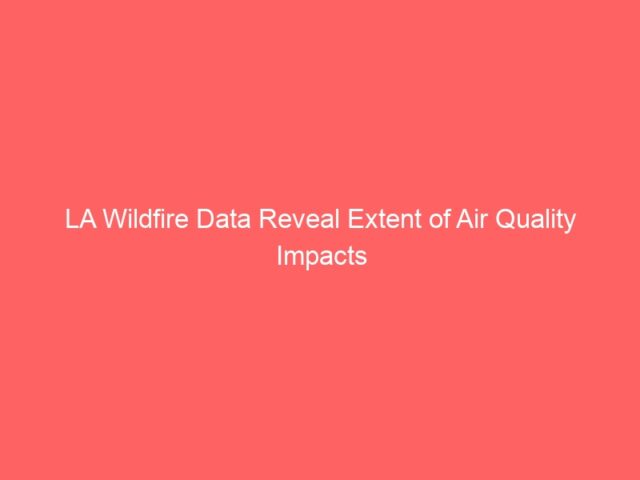Combining a number of knowledge sources throughout wildfire disasters may create simply accessible air high quality data for the general public.
RT’s Three Key Takeaways:
- Wildfire smoke poses well being dangers, as January 2025 fires in Los Angeles brought on PM2.5 ranges to achieve “Unhealthy” to “Hazardous” ranges throughout the area.
- Completely different monitoring instruments present tradeoffs, with EPA stations providing excessive accuracy however sparse protection, low-cost sensors giving extra localized however much less exact knowledge, and satellites capturing wide-area smoke motion that doesn’t all the time replicate floor situations.
- Combining a number of knowledge sources—federal displays, low-cost sensors, and satellites—creates a fuller, extra well timed image of air high quality to assist folks cut back smoke publicity and make safer real-time selections.
In early 2025, wildfires unfold in Los Angeles, destroying tens of 1000’s of properties and companies. Throughout the fires, smoke blanketed the area and on-line maps offered residents with fast air high quality data. Now, a examine in ACS’ Environmental Science & Expertise Letters compares the information that went into the maps from federal monitoring stations, low-cost sensors and satellites. Their outcomes spotlight the significance of mixing a number of knowledge sources to type simply accessible data for the general public.
“Well timed and correct air high quality data is essential for the general public to cut back their smoke publicity throughout wildfire occasions,” says Claire Schollaert, the examine’s corresponding writer. “Combining federal displays, low-cost sensors, and satellite tv for pc knowledge can present a extra full image of native air high quality, which will help folks make safer selections in actual time.”
Wildfires create smoke and haze that may be dangerous to breathe. To scale back smoke publicity and mitigate potential well being dangers, public well being specialists advocate checking the native Air High quality Index (AQI) earlier than stepping outdoors. The AQI ranks outside air from “Good” to “Hazardous,” calculating values from the degrees of air pollution current, together with high-quality particulate matter (PM2.5). The U.S. Environmental Safety Company’s (EPA) AirNow Fireplace and Smoke Map and the PurpleAir low-cost sensor community are on-line platforms that present AQI data from floor displays. Moreover, the AirNow Fireplace and Smoke Map supplies smoke plumes from the Nationwide Oceanic and Atmospheric Administration’s (NOAA) Hazard Mapping System. Satellite tv for pc observations of near-real time air air pollution are additionally collected however aren’t available on these standard on-line platforms. In a retrospective of the January 2025 LA wildfires, Schollaert and colleagues in contrast the information offered in these three publicly accessible datasets to know the place overlaps and informational gaps might happen.
The researchers obtained air high quality monitoring knowledge for LA County from eight EPA stations within the AirNow community, 728 low-cost particulate matter sensors, and satellite tv for pc knowledge of smoke plume outlines and pollutant concentrations. Throughout the fireplace interval, when the Eaton and Palisades wildfires ignited and intensified (Jan. 7-12, 2025):
- EPA stations detected elevated PM2.5 ranges in downtown LA and Compton, reaching “Unhealthy” and “Unhealthy for Delicate Teams” AQI classes, respectively.
- Twelve of the low-cost sensors situated nearer to the fires (inside 4.7 miles, 7.5 kilometers) had PM2.5 ranges within the “Hazardous” AQI vary.
- Satellite tv for pc photos tracked the motion of light- to heavy-density smoke within the ambiance, which usually matched locations on the bottom with elevated PM2.5 ranges.
The stationary floor displays confirmed that prime AQI values usually aligned with the places of thick smoke plumes seen by the satellites, although this was not all the time the case. Moreover, every knowledge supply has its benefits and drawbacks: The EPA displays are extremely correct however restricted in quantity, the low-cost sensors are much less correct however extra prolific, and the satellites cowl much more floor however don’t all the time replicate the situations on the bottom. However mixed, these instruments could possibly be helpful for folks in smoke-impacted areas to make knowledgeable selections about their publicity dangers in close to actual time, the researchers say.













